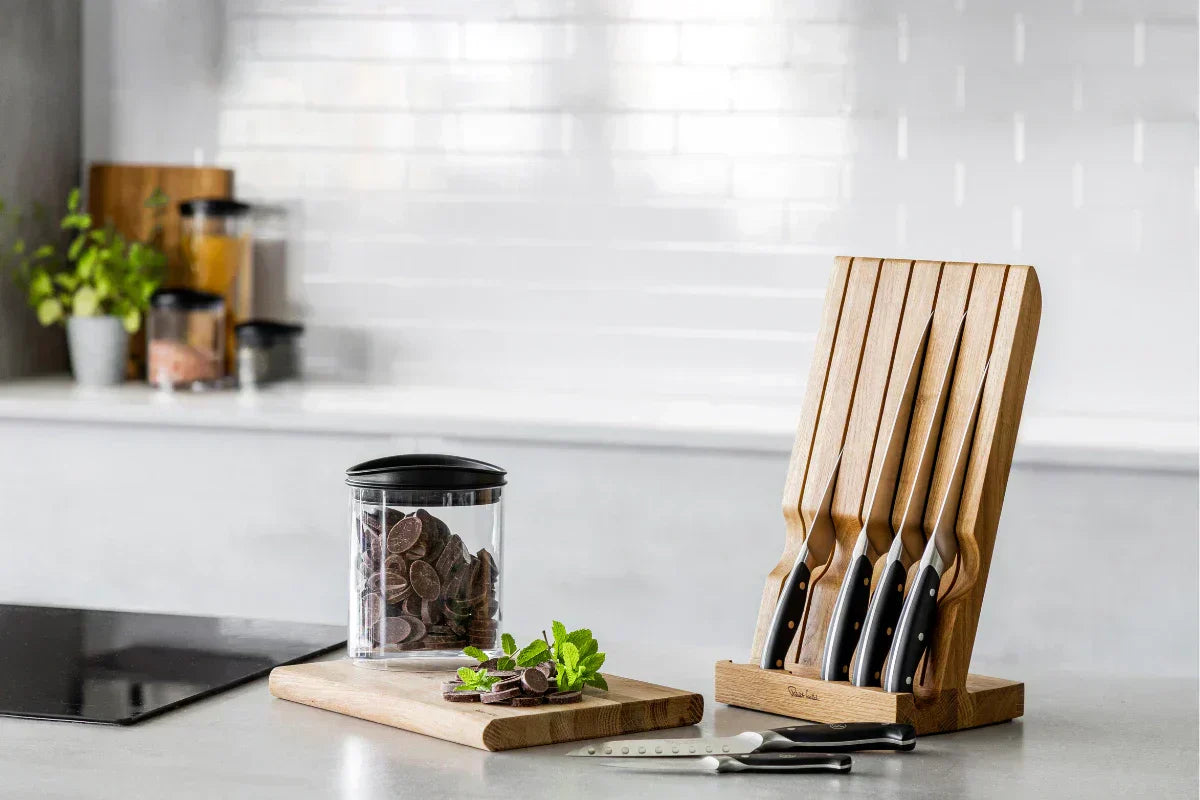What Is A Paring Knife Used For?

What is a paring knife?
A vegetable paring knife is a small, versatile kitchen knife that is specifically designed for peeling, trimming, and intricate cutting tasks involving fruits and vegetables. It typically has a short, narrow blade with a pointed tip, allowing for precision and control during delicate manoeuvres.
This type of knife is a staple tool for both professional chefs and home cooks due to its manoeuvrability and ability to handle intricate work. With its compact size and sharp blade, a vegetable paring knife excels at tasks such as peeling the skin off fruits and vegetables, removing blemishes or eyes from produce, creating decorative garnishes, and making precise cuts for intricate recipes.
The lightweight and agile nature of a vegetable paring knife make it easy to handle and navigate around irregular shapes and curves of various fruits and vegetables. Whether you're working with small items like radishes or larger produce like potatoes, the vegetable paring knife is an indispensable tool in the kitchen.

History & Origins Of The Paring Knife
The history and origins of the paring knife trace back to ancient times when humans first began using sharp tools for various tasks. The concept of a small, versatile knife specifically designed for intricate and delicate work gradually emerged. Paring knives, as we know them today, evolved from early kitchen knives and utility knives used for peeling, trimming, and slicing small fruits, vegetables, and other ingredients. While the exact origin of the paring knife is unclear, it is believed to have originated in Europe during the Middle Ages.
With advancements in metalworking and blade technology, paring knives became more refined, featuring a shorter blade, a pointed tip, and a comfortable handle. Over the centuries, paring knives have become an indispensable tool in kitchens worldwide, embodying both functionality and precision. Today, they are cherished by professional chefs and home cooks alike for their versatility
and ability to handle intricate tasks with ease.
Paring Knife Uses
The paring knife is a small but mighty tool that finds its place in numerous culinary scenarios. Its compact size and pointed tip make it perfect for tasks that require precision and intricate manoeuvring.
One of the primary uses of a paring knife is for peeling fruits and vegetables. Whether you need to remove the skin from an apple, remove the pith from citrus fruits, or peel the delicate skin of a tomato, the paring knife's nimble blade allows for controlled and efficient peeling.
Additionally, the paring knife excels in tasks that demand detailed work, such as deveining shrimp, trimming fat from meat, or creating intricate garnishes. Its sharp edge is ideal for making precise cuts, whether it's removing eyes from potatoes or segmenting citrus fruits. Furthermore, the paring knife is handy for coring and removing seeds from fruits like apples or peppers.
Its versatility extends to intricate carving, such as sculpting decorative shapes out of vegetables or fruits. When you encounter tasks that call for precision, delicacy, and fine control, reach for the paring knife to accomplish them with ease.

Techniques When Using A Paring Knife
Paring knives offer excellent manoeuvrability for pivoting and trimming tasks. One of the fundamental techniques with a paring knife is peeling. Grip the handle firmly and use the pointed tip to remove the skin from fruits and vegetables. Start by making a shallow cut, ensuring you remove only the skin while preserving the flesh underneath. Work your way around the ingredient, rotating it as needed, until the desired peel is achieved.
Factors To Consider When Choosing The Right Paring Knife
The blade material greatly impacts the performance and durability of a paring knife. High-carbon stainless steel is a popular choice as it offers excellent sharpness, corrosion resistance, and ease of maintenance. Look for blades made from quality materials that retain their edge and are resistant to staining or rusting.
Paring knives typically have blade lengths ranging from 3 to 4 inches. Consider your personal preference and the tasks you intend to tackle. A shorter blade offers better manoeuvrability for intricate work, while a slightly longer blade may be beneficial for tasks like slicing larger fruits or vegetables.
Since paring knives require precise control, a comfortable and secure grip is essential. Look for a handle that feels ergonomic in your hand and provides a nonslip grip, even when wet. Materials like wood, plastic, or composite materials can offer different levels of comfort and durability, so choose according to your preference.
A well-balanced paring knife ensures optimal control and reduces hand fatigue during prolonged use. Hold the knife in your hand and assess how it feels. Ideally, the weight should be evenly distributed between the blade and the handle, providing a sense of balance and stability
Consider the shape and edge style of the paring knife. Some paring knives have a straight edge, while others have a slight curve or a granton edge (a row of small oval-shaped indentations). The shape and edge style can affect the knife's versatility and performance for specific tasks, such as peeling, slicing, or detail work.




